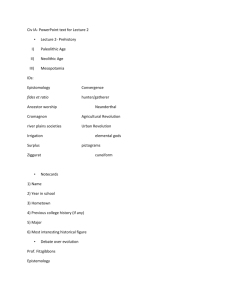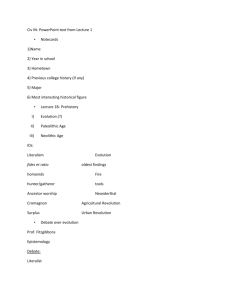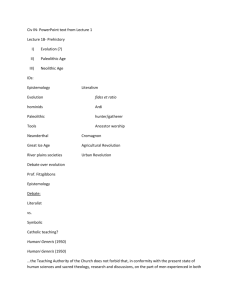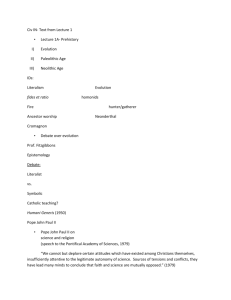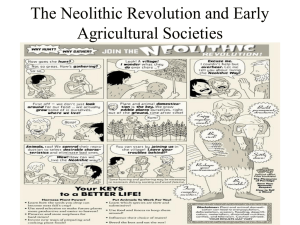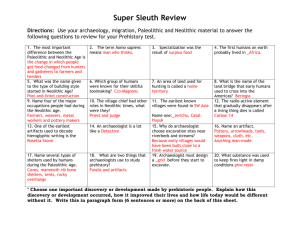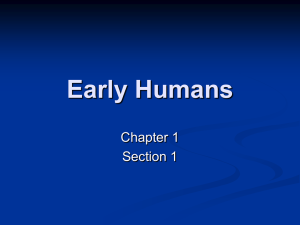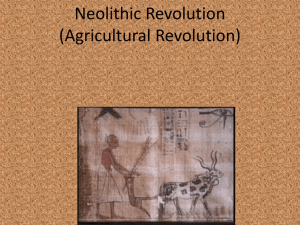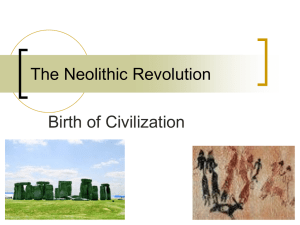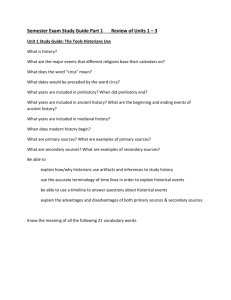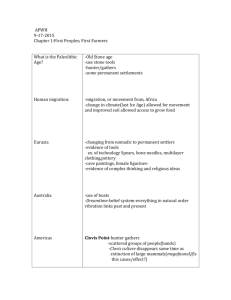PP text
advertisement
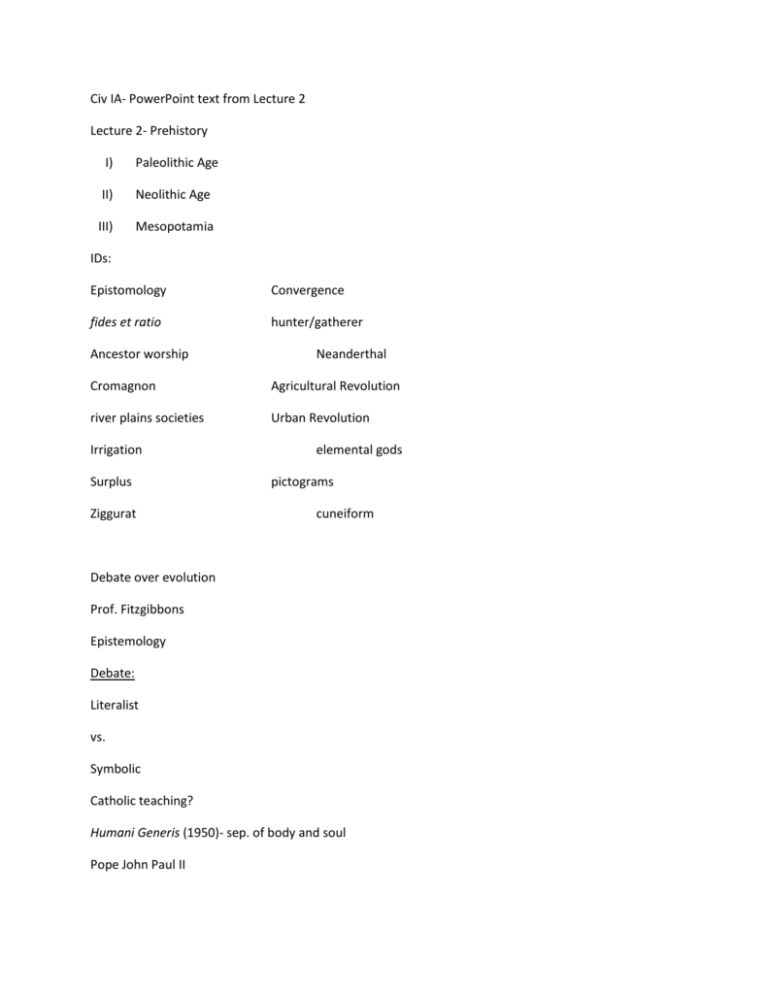
Civ IA- PowerPoint text from Lecture 2 Lecture 2- Prehistory I) Paleolithic Age II) Neolithic Age III) Mesopotamia IDs: Epistomology Convergence fides et ratio hunter/gatherer Ancestor worship Neanderthal Cromagnon Agricultural Revolution river plains societies Urban Revolution Irrigation Surplus Ziggurat elemental gods pictograms cuneiform Debate over evolution Prof. Fitzgibbons Epistemology Debate: Literalist vs. Symbolic Catholic teaching? Humani Generis (1950)- sep. of body and soul Pope John Paul II Pope John Paul II on science and religion (speech to the Pontifical Academy of Sciences, 1979) “We cannot but deplore certain attitudes which have existed among Christians themselves, insufficiently attentive to the legitimate autonomy of science. Sources of tensions and conflicts, they have lead many minds to conclude that faith and science are mutually opposed.” (1979) Further statement (on science and religion in general): Fides et Ratio (1998) Pope John Paul II on evolution (1996) “Today, more than a half-century after the appearance of [Pius XII’s Humani Generis], some new findings lead us toward the recognition of evolution as more than an hypothesis.” Early hominids “Lucy” C. 3-4 million years ago Recent discovery East Africa (Zaire) C. 8 million years ago Concurrent types of homonids II) Paleolithic Age Paleolithic Peoples From 2.5m years BC- to 10,000 BC “Old” + “stone” Discovery of fire- c. 500,000 BC Hunter/gatherer communities - followed wild herds - 20-30 individuals Moved from Africa to Europe and Asia Stressful life Paleolithic Shelters Paleolithic Era Inhabitants Homo sapiens- approx. 200,000 BC - 2 types #1- Neanderthals - 100,000 BC - 40,000 BC - early language - early religion- “ancestor worship” Neanderthal burial Cave Paintings Paleolithic Era Inhabitants Homo sapiens- approx. 200,000 BC - 2 types #1- Neanderthals #2 Cromagnon (homo sapiens sapiens)c. 250,000- 10,000 BC - community - outlasted Neanderthals II) Neolithic Age Neolithic Peoples Began after the end of the Great Ice Age (around 10,000 BC) Food moved north Mild and damp climates Revolution #1: Agricultural Revolution 1st Major change: Agricultural Revolution - 7,000 or 8,000 years BC - domestication - gamble - payoff Neolithic creations Neolithic burial Neolithic burial site at Newgrange Revolution #2: Urban Revolution Earliest Cities Satal Huyuk (Catal Hüyük)- c. 7000 BC Around 6,000 residents Use of copper “Civilization” and the Urban Revolution: 4 basic components Political - irrigation→ organization Religious - ancestor worship→ elemental gods Economic/social - surplus - specialization Cultural - pictographs Urban Revolution- Mesopotamia Political: Need for cooperation on irrigation The Fertile Crescent Mesopotamian irrigation (ca. 4000 BC) Mesopotamian irrigation (ca. 4000 BC)
